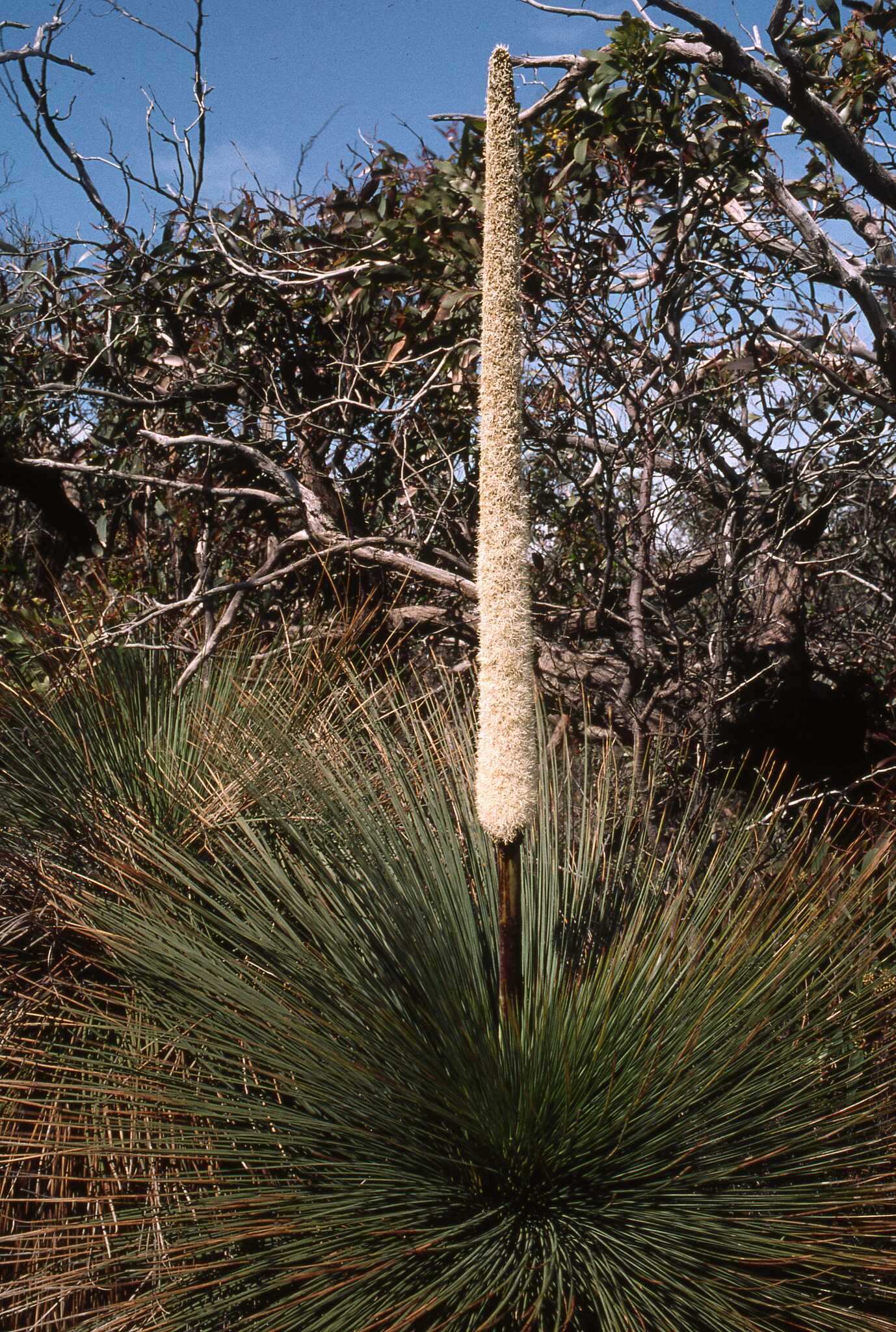
Greek xanthos – yellow, rhoea – flowering, referring to the yellow resin found in X. resinosa.
Perennials with subterranean or tree like stems. Trunks woody, the surface packed with the old leaf bases and sometimes blackened from fire; may branch once or twice and a skirt of old leaves is often formed. Leaves usually in a terminal tuft, narrowly linear. Flower clusters cylindrical, spike-like, in dense clusters on thick, woody stems. Flowers bisexual, regular, 3 parted surrounded by bracts, Segments 6 in 2 whorls of 3, free. Stamens 6 protruding. Ovary superior, 3 chambered with several ovules per chamber. Fruit a loculicidal capsule.
Grown for the strong grassy form these plants are slow growing and although flowering after 7-10 years may take longer to form trunks. Useful large-scale identification characters include the length of the trunk, the ratio of the length of the flower spike to its stalk, also the leaf colour and width. The flower heads of some species are poisonous to cattle.
28 Australian endemic species; they occur in all states.
Seed.
Aborigines have used the plants in several ways including: leaf bases eaten raw, as was the growing tip; resin as an adhesive; flower spikes for fire torches or to produce a sweet drink when soaked in water; fibre for nets.
Plants forming grassy, often tree-like, tufts but with tough linear leaves and tall, woody, spear-like flower clusters.
Bedford (1986).
Source: (2005). Xanthorrhoeaceae. In: . Horticultural Flora of South-eastern Australia. Volume 5. Flowering plants. Monocotyledons. The identification of garden and cultivated plants. University of New South Wales Press.
